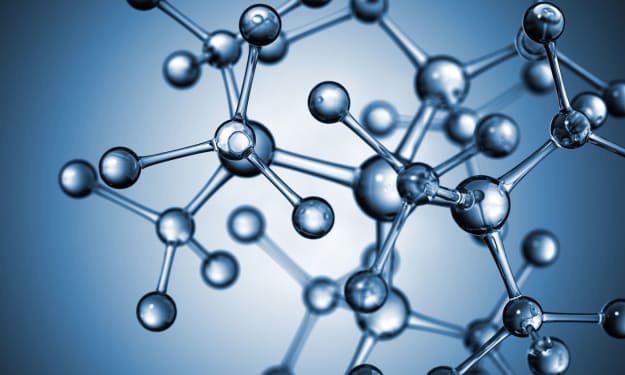The first comprehensive brain cell atlas
Our Brain Cell Atlas

Neuroscientists have found through experiments that the primary motor cortex in the brain, which controls movement, contains as many as 116 different types of cells that work together to achieve people's goals and actions. This is also the first comprehensive brain cell map launched by scientists.
A study published Oct. 6 in the journal Nature shows that the brain region responsible for initiating actions, the primary motor cortex, which controls movement, contains as many as 116 different types of cells that work together to achieve people. target to take action.
The discovery is the culmination of five years of work by a large consortium of researchers supported by the National Institutes of Health's Institute for Brain Science, supported by the Innovative Neurotechnology Initiative, to identify different cell types in one part of the countless brains.
Why study cells?
The brain is the most advanced part of the nervous system. It consists of left and right cerebral hemispheres. Nerve fibers connect the two hemispheres.
The human cerebral cortex is the most developed. It is the organ of thinking. It controls all the activities of the body and regulates the balance between the body and its surroundings. Therefore, the cerebral cortex is the material basis of higher neural activity.
While researchers have found multiple cell types in the brain, the map of all cell types in this region of the primary motor cortex is the first comprehensive list and a starting point for tracing cellular networks to understand how they control our mind and body, and how they are disturbed by mental and physical impairments.
The findings are the first step in a long-term project to generate whole-brain maps to help understand how the neural networks in our brains control our bodies and minds, and how they can be disrupted when mental and physical problems arise.
"If you think of the brain as an incredibly complex machine, how can we understand it without first breaking it down and understanding its parts," says Helen Bateup, a cellular neuroscientist at the University of California, Berkeley.
Helen Bateup believes that the first page of any manual on how the brain works should read the composition of all the cells in the brain, how many, where they are located and who they are connected to.
While individual researchers have previously identified dozens of well-known subtypes of cell types based on their shape, size, electrical properties, and the genes expressed in them, the new study identified roughly five times as many cell types.
For example, cells that release specific neurotransmitters, such as gamma-aminobutyric acid (GABA) or glutamate, each have more than a dozen subtypes that can be distinguished from each other by patterns of gene expression and electrical excitation.
While the current paper only addresses the motor cortex, the BRAINInitiative Cell Census Network, created in 2017, works to map all the different types of cells throughout the brain, including more than 160 billion individual cells, plus two that are both neurons and supporting cells of neuroglia.
"Once we define all of these parts, then we can go to the next level and begin to understand how these parts work together, and how they form, function circuits, and ultimately how perceptions and behaviors arise," Bateup said. and more complex things."
experiment procedure
Former UC Berkeley professors John Ngai, Bateup, and UC Berkeley colleague Dirk Hockemeyer used CRISPR-Cas9 to create specific cell types in mice, which they labeled with fluorescent markers, allowing them to track these cells throughout the brain connection in .
The Berkeley team created two strains of "knock-in" reporter mice simultaneously, providing new tools for elucidating connections between newly discovered cell types.
"One of our many limitations in developing effective treatments for human brain diseases is that we don't know enough about which cells and connections are affected by a particular disease to be able to pinpoint exactly what we need Where and where to target, detailed information about the cell types and characteristics that make up the brain will ultimately aid in the development of new treatments for neurological and neuropsychiatric disorders."
Bateup, Hockemeyer and Ngai then collaborated on an earlier study to analyze all active genes in a single dopamine-producing cell in the mouse midbrain, which has a structure similar to the human brain.
Other BICCN researchers have used the same analytical technique to profile cells in the motor cortex, which involves identifying all of the specific messenger RNA molecules and their levels in each cell.
This analysis using a technique called single-cell RNA sequencing, or scRNA-seq, is called transcriptomics.
The scRNA-seq technique is one of more than a dozen independent experimental methods used by the BICCN team to characterize different cell types in three different mammals (mice, marmosets, and humans).
Four of these involve different methods of identifying gene expression levels and determining the chromatin structure and DNA methylation status of the genome, which is known as the epigenome.
Other techniques include classical electrophysiological patch-clamp recordings, distinguishing cells by how they fire action potentials, sorting cells by shape, determining their connectivity, and looking at the spatial location of cells in the brain. Some of them use machine learning or artificial intelligence to differentiate cell types.
"The paper concludes that there is significant overlap and consistency in identifying cell types with these different methods," Hockemeyer said. "These conclusions, with high resolution and different methods, are also the most comprehensive descriptions of these cell types."
A team of statisticians combined data from all of these experimental approaches to determine how best to classify or cluster cells into different types, possibly based on observed differences in expression and epigenetic profiles between these cells.
While there are many statistical algorithms available to analyze such data and identify clusters, the challenge is to identify which clusters have truly distinct cell types, said Sandrine Dudoit, a professor and chair of the Department of Statistics at UC Berkeley.
"The idea was not to create another new clustering method, but to find ways to take advantage of different methods and combinations of methods, and to evaluate the stability of the results, the reproducibility of the clusters obtained, for all of these," Dudoit said. That's really a key piece of information for studies looking for new cell types or new cell classes: no matter what algorithm you try, you're going to get clusters, so having real confidence in your results is key."
result
Bateup noted that the number of individual cell types identified in the new study ranged from dozens to 116 depending on the technique used.
"Previously, we've defined 10 or 20 different cell types, but we didn't know if the cells we defined by gene expression patterns were the same as those defined based on electrophysiological properties, or the neurons defined by their morphology," Bateup said. Same type."
"One of the great advancements of BICCN is that we have combined many different ways of defining cell types and brought them together, resulting in a consistent taxonomy that is not based solely on gene expression or physiology or Morphology, and taking all these properties into account, so, now we can say that this particular cell type expresses these genes, has this morphology, has these physiological properties, and is located in this particular area of the cortex. So you're very interested in this particular area of the cortex. A deeper, more nuanced understanding of cell types is their fundamental properties."
Future research may show that the number of cell types identified in the motor cortex is overestimated, but the current study is a good start in assembling an atlas of cells across the brain, Dudoit said.
"Even among biologists, there is great disagreement about how much resolution these systems should have, and whether there is such a very fine clustering structure, or whether there are really more stable and higher-order cell types, In this way, these results demonstrate the power of collaborative efforts between different groups.
We start with a biological problem that cannot be solved by biologists alone. To solve such a large and challenging problem, you need a group of experts from different disciplines who can communicate and collaborate well. "
About the Creator
sayre laylah
Tired of monotonous climbing moves, but every step is close to the top
Enjoyed the story? Support the Creator.
Subscribe for free to receive all their stories in your feed. You could also pledge your support or give them a one-off tip, letting them know you appreciate their work.






Comments
There are no comments for this story
Be the first to respond and start the conversation.